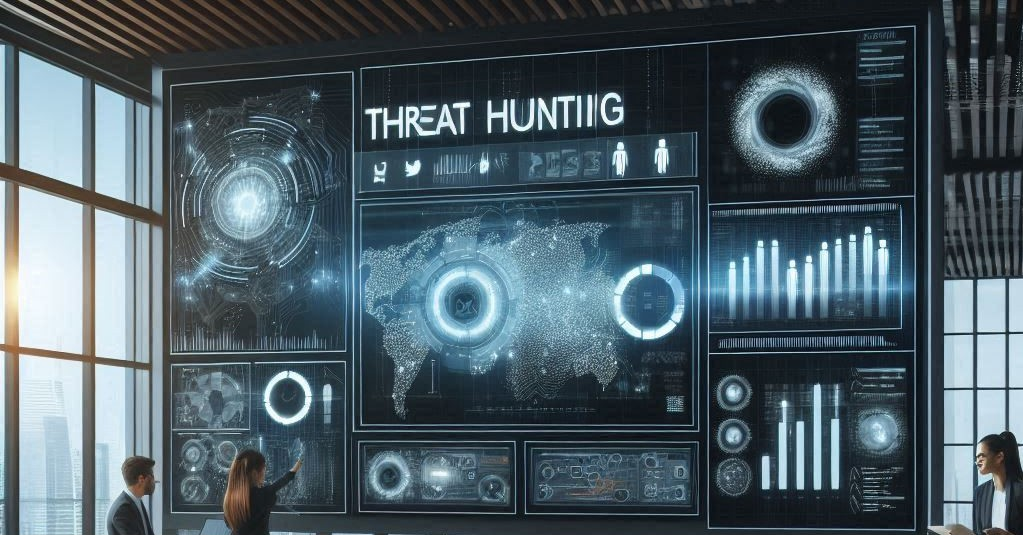
Proactive threat hunting is not just a buzzword in the cybersecurity world. It’s about actively seeking out threats before they become serious problems. This approach flips the script from defense to a more aggressive offense and gives organizations a fighting chance against increasingly complex cyber threats.
Artificial Intelligence (AI) is like the secret weapon many organizations didn’t know they needed. By using AI, we can quickly identify potential threats, analyze data at lightning speed, and even predict where and when the next cyber-attack might happen. This is crucial in a world where new vulnerabilities pop up faster than we can patch the old ones.
The threat landscape is always changing. What was considered secure yesterday might be a vulnerability today. Hackers are constantly refining their techniques, making it imperative for cybersecurity professionals to stay ahead of the game. AI tools make this possible by adapting and learning from each attack, turning collected data into actionable intelligence.
AI doesn’t just work in isolation. It collaborates with human analysts, enhancing their ability to make informed decisions quickly. This symbiotic relationship between AI and cybersecurity experts ensures a robust defense against both new and old threats, ultimately protecting valuable data and ensuring operational continuity.
Essential AI Tools for Threat Hunting
There’s a diverse range of AI tools designed specifically to aid in threat hunting, each with its unique strengths and capabilities. Some of the standout players include tools like Darktrace, Cylance, and IBM QRadar. These platforms leverage machine learning and behavioral analytics to scrutinize network traffic and identify irregular patterns that hint at potential threats.
Take Darktrace, for instance. It’s like having a digital immune system that learns what normal network behavior looks like and then flags anything unusual. This kind of constant learning and adaptation means threats are identified and mitigated in real-time, often before they even execute their damaging effects.
Cylance, on the other hand, is well-known for its predictive approach, using AI to preemptively block malware attacks through pattern recognition. It’s like a guardian that doesn’t just wait for an alert but actively seeks out and stops threats in their tracks.
Tools like IBM QRadar are all about broad-spectrum monitoring. By correlating data from various sources, it provides a comprehensive overview of network security. Think of it as the all-seeing eye that connects the dots between seemingly unrelated events to uncover hidden threats.
What sets these AI tools apart from traditional methods is their speed and scalability. While human analysts offer invaluable insights, they simply can’t match AI’s ability to process large volumes of data swiftly, ensuring threats don’t slip through the cracks. This means that organizations can stay not just one but several steps ahead of cyber adversaries.
Selecting the Best AI for Cyber Security
When it comes to picking the right AI for cybersecurity, it’s crucial to focus on the needs and the specific threat landscape of your organization. Think of it as finding the perfect pair of shoes. It has to fit just right!
Some of the leading AI models in this space include Google’s TensorFlow, OpenAI’s GPT, and Microsoft’s Azure AI. These models offer robust support for building customized threat detection systems that blend seamlessly with existing IT infrastructure.
TensorFlow is particularly valued for its flexibility and comprehensive ecosystem. It allows cybersecurity teams to design bespoke solutions, tailor-made to their unique security challenges. If customization is high on your priority list, TensorFlow could be a solid choice.
OpenAI’s GPT has made waves in natural language processing, which can be a game-changer for analyzing and interpreting vast amounts of data. This is especially useful for sifting through logs and identifying security events based on textual inputs.
Microsoft Azure AI stands out with its scalability and integration features. It’s ideal for organizations that prioritize seamless integration with cloud services. Its AI models can easily scale up to process large volumes of data, ensuring no potential threat is overlooked.
AI isn’t just about detection. It also aids in orchestrating an effective response. The best tools help security teams decide the most efficient steps: they streamline and automate responses, reducing the time between threat detection and action, effectively limiting damage.
AI Techniques for Effective Threat Detection
AI techniques for threat detection are like the unsung heroes of cybersecurity. Methods such as machine learning and deep learning aren’t just fancy tech terms—they’re the core processes powering smarter threat hunting.
Machine learning, for example, is all about algorithms that learn and adapt from data. These models can detect subtle patterns and anomalies in network traffic or system behavior that might indicate a security breach. This isn’t just about recognizing known threats but also anticipating new attack vectors.
Deep learning takes this a step further by using neural networks to handle large and complex datasets effectively. It’s the go-to for scenarios where the data is too massive or intricate for traditional algorithms to manage. Deep learning can uncover hidden connections between events, offering insights that aren’t immediately apparent.
A real-world example of these techniques in action is the use of machine learning in phishing detection. Instead of relying on manual analysis, machine learning models can scan emails, identify suspicious elements, and learn to spot even the most convincingly deceptive phishing attempts.
There’s also anomaly detection which plays a role in identifying deviations from normal operations. It’s like having an intuitive watchdog that raises alerts whenever something unusual occurs in your system, often allowing for pre-emptive actions before any real damage is done.
By employing these AI techniques, organizations not just enhance their detection capabilities but also improve response times. The swift identification and management of threats are crucial in minimizing impact and ensuring the security of sensitive data.
Securing AI Applications: Development Tools and Practices
As we build AI systems to protect against threats, it’s just as crucial to secure these systems themselves. The irony would be that we create a robust AI solution, only to leave it vulnerable to attacks.
Developing secure AI applications requires a combination of advanced tools and best practices. Tools like TensorFlow Privacy, PySyft, and IBM’s Adversarial Robustness Toolbox focus on fortifying the security of AI models. These tools help in implementing techniques like differential privacy and federated learning, essential for protecting sensitive data while still utilizing it for training models.
With TensorFlow Privacy, you can ensure that the AI uses data without ever seeing the original information. This is a game-changer when handling sensitive datasets needed for training without sacrificing privacy.
PySyft takes things further by enabling federated learning, where AI models learn from decentralized data sources, keeping sensitive information on local devices while contributing to a collective learning process. It means forging a powerful AI system without compromising the data’s security.
The IBM Adversarial Robustness Toolbox is essential for those looking to test and enhance their AI against attacks designed to fool models, known as adversarial attacks. This proactive approach identifies weaknesses early on, allowing teams to bolster defenses before they can be exploited in a real-world scenario.
Keeping AI systems secure is a continuous process. Regular updates, vulnerability assessments, and adopting a mindset of adaptability in security strategies is essential. This not only protects the applications but ensures they serve their protective purpose without becoming targets themselves.

